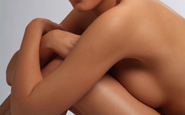
As medical professionals, nurses know the dangers of sunbathing. Yet, who can resist wanting that sun-kissed glow to counteract those harsh hospital and medical office lights?
Everyone knows that showing off gorgeous, bronzed skin under tank tops and sundresses are all part of summer fun! Self-tanning can be the perfect option for nurses working crazy, erratic schedules including night shifts and 12 hour shifts who really can’t get out in the sun.
It may come as a surprise but self-tanners have come a long way in the past few years (no, we’re not kidding). They’re a quick, easy and affordable way to get that I-spent-the-day-at-the-beach look without the health risks of tanning beds and direct sunlight.
To get the best results, follow this guideline of easy self-tanning DOs and DON’Ts:
- DO exfoliate. Before applying a product, slough off those dead skin cells while showering so the product will go on smoothly.
- DO apply moisturizer to your ankles, feet, knees, elbows, wrists and hands. This prevents you from applying too much tanner in that area. You can wear plastic gloves while applying the product, then as a final step, apply it lightly with a cosmetic sponge only to the backs of your hands—never your palms.
- DON’T rush it. Take the time to set up an area where you can apply your product. Self-tanners come in several forms, including mousse, spray, lotion, gel and foam. It doesn’t really matter what you pick; it’s up to you. Make sure you stand on an old towel or rug when applying in case the product drips. Give it time to dry (at least several minutes, although some take longer). Self-tanners can stain clothes if you put them on while the product is still drying, so consider applying before bedtime, then donning some old scrubs or jammies.
- DO consider a tanning salon. If you’re concerned you might mess up or just don’t want to make the effort to self-tan at home, salons offer a variety of options from spray tanning booths to body-sculpting tans (to give the illusion of toned abs or thinner thighs). These are pricier options than the home tan; sessions can be $50 or more. Also, be aware that while you can stand in a booth alone and be sprayed by a machine, you will have to be nude for tanning by an aesthetician.
- DON’T forget to sniff. Many people dislike the smell of self-tanners, but some products may bother you less than others. If possible, smell the product before buying.
- DO try gradual tanning if you’re cautious. If you’re not sure you want to go from pale to golden tan overnight, consider some of the gradual self-tanners such as Neutrogena Build-a-Tan or Jergens Natural Glow products. It may take longer (a week or more) to achieve a darker color, but it gives you more control day by day.
- If you do decide to tan outside or in a tanning bed, you can still tan more safely by applying sunscreen and reapplying after you get in the water.

















